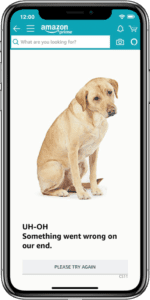
Mike Hann, co-founder and chief commercial officer, Poq
The app category of Shopping grew by 54 percent according to Flurry’s 2017 State of Mobile Report This huge jump in popularity indicates consumers are continuing to shift their spending into e-commerce using mobile shopping apps. There’s a number of reasons for this spike, one being that we have become accustomed to making purchases on our smartphones. And it’s getting easier all of the time to not only find and choose products, but the checkout process has made huge leaps and bounds in the last few years. Digital wallet services like Apple Pay and Samsung Pay allow secure and seamless access to stored payment information for mobile purchases.
So, it goes without saying that with the 2018 holiday season is just months away, this is the best time to take a serious look at your app and assess whether you’re ready for the busiest shopping season of the year. Our own research determined that in 2017 November overtook December as the busiest shopping month of the year with app revenues growing 134% year-over-year. In fact, Q4 accounted for a third of total app revenue. This growing engagement also led to an app spending spree—shoppers spent an average of 3.6x more in shopping apps than on the mobile web.
We’re not alone in predicting that the 2018 holiday season will continue to be digitally-driven, with mobile commerce and apps playing a bigger role than in previous years. That’s why there really is no better time for retailers to make an investment in their mobile apps in order to increase customer engagement now, and well beyond the upcoming holiday season. We took what we learned from last year to offer these four best practices to make sure your app is Black Friday-ready.
1. Make Black Friday a team effort
The holidays can be stressful for everyone, including retail marketing and e-commerce teams. Make sure the teams responsible for managing your app performance are aware of how much traffic you expect to see coming through the app over the duration of your sales campaigns. Also make sure they are informed and up-to-speed on the specifics of the marketing campaigns and sales you plan to run, and when, including any flash sales, so they can make adjustments to ensure the app is running smoothly and poor performance isn’t adversely affecting your customers. Lastly, make sure to do all of this well in advance so any updates that need to be made to your app can be made in time before your deployment freeze. Which leads us to the next tip….
2. Put a freeze on build deployments to minimize risk
Don’t risk any new bugs or errors making it onto your app during the highest traffic periods of the year, which would stop your customers from having a smooth and errorless journey. Ensure that your team freezes the deployment of changes to the app in the run-up to, and during and through Black Friday weekend. As we’ve seen over the last few years, Black Friday has begun to spread across a good part of November, so we recommend freezing deployments at least a week before the big day as traffic ramps up and customers get enthusiastic during the countdown to Black Friday.
3. Don’t discount the importance of scaling-up and load testing
 Scaling up your servers and load testing your app in preparation for the increased volumes of traffic is standard operating procedure, but you’d be surprised at the companies you’d expect to be on top of this. Amazon makes this list with the major problems customers encountered on Prime Day 2018. While Amazon ranked No. 9 for the most downloaded app for U.S. iPhone users on the day before Prime Day, as soon as the yearly sales event kicked off consumers were faced with a litany of issues, from not being able to access the homepage, missing out on time-based sales and seeing error pages featuring the furry companions of Amazon’s employees as a result.
Scaling up your servers and load testing your app in preparation for the increased volumes of traffic is standard operating procedure, but you’d be surprised at the companies you’d expect to be on top of this. Amazon makes this list with the major problems customers encountered on Prime Day 2018. While Amazon ranked No. 9 for the most downloaded app for U.S. iPhone users on the day before Prime Day, as soon as the yearly sales event kicked off consumers were faced with a litany of issues, from not being able to access the homepage, missing out on time-based sales and seeing error pages featuring the furry companions of Amazon’s employees as a result.
While we all love dogs (or should!), this downtime only frustrated customers that were psyched for Prime Day and would ultimately have a negative impact of sales and conversion rates. Some estimated that Amazon lost upwards of $100 million due to downtime. Even with those losses, Prime Day was a win for Amazon. Web traffic surged 50 percent compared to a normal day and the conversion rate across its desktop and mobile websites surge to 15.5 percent on the full day of sales compared to 11.1 percent conversion seen a week before the promotion, a nearly 40 percent increase While your retail business may not experience losses on this scale, ensure your team is fully aware of the potential for big upticks in traffic, especially in the days leading up to Black Friday weekend.
4. Advanced preparation is a necessity
Anticipate and prepare for the risk of issues occurring well in advance and, by doing so, your app shopping experiences will run smoothly for customers. While you can’t account for every glitch, preparation can cut down on the “hair on fire drills” that you may encounter. You can do so by scheduling your push notifications well in advance to leave you with the time and resources to deal with any other issues that may arise throughout the sale period. What’s important to note here is the less time you have to attribute to daily tasks the more time you can put into ensuring everything runs smoothly in this most profitable period of the year.
Poq offers a software-as-a-service platform designed to help retailers create mobile apps.
Favorite